At his farm in Zuromin, Pawel Karpinski grows tomatoes in 3.5ha of glasshouses but found it difficult to expand due to rising production costs, stagnating prices and growing international competition. In 2017, Karpinski started hydroponic production of lettuce in a new 6200m² greenhouse. Phase 2 in 2019 saw the greenhouse size double to 12,400m² and phase 3 in 2020 added a further 6200m² to 18,600m².
Hydroponic production of lettuce is developing in Poland with good growth in the market for fresh and living salads. Karpinski is one of the first growers to supply this local market, selling direct to large supermarket groups and delivering to distribution centres themselves. The modern greenhouse built by BOM has diffused glass, energy and light break screens and a moving gutter system from FGM, to maximise the number of plants per m².
Hyperion Grow Lighting Director, Jonathan Barton met with Pawel to discuss his experience with different lighting systems.
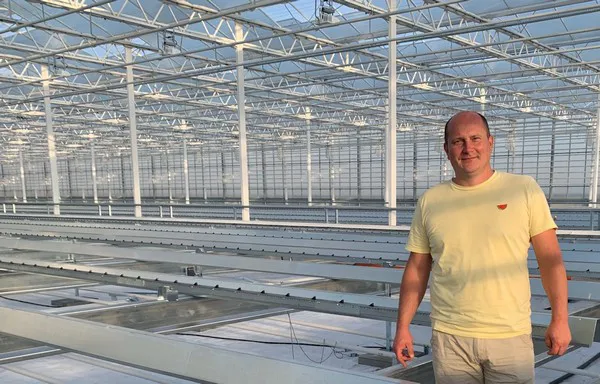
When did you first add assimilation lighting?
“From the beginning of phase 1, back in 2017. In order to grow year-round, extra light was needed. As it was a new crop and growing system, I wanted to minimise the risks and so I chose HPS lamps as a proven solution.”
What persuaded you to try LED?
“Electricity costs have risen sharply in recent years and are set to continue. LED lamps use a lot less energy, so they save money. In addition, I have always believed that you should look for the newest solution to be ahead of the market. The heat from HPS is useful during the cold winter months and so in the phase 2 greenhouse I decided to try LED lamps together with HPS. I chose Hyperion because their LED lamps are proven in other lettuce greenhouses.”
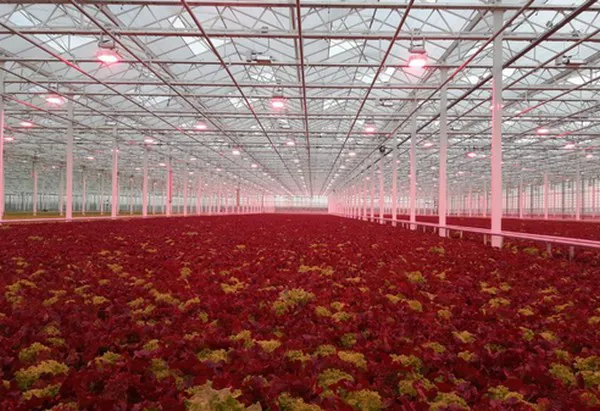
2019. Phase 2 with only the LEDs lit
How did you find growing with a hybrid installation of HPS and LED? Did you have to make changes to the growing strategy and what were the results?
“The lettuce is more compact, better coloured and has a better quality after harvest. We keep the temperature slightly higher than where we only have HPS lamps, but this is a very slight difference.”
What gave you the confidence to decide to switch fully to 100% LED for the phase 3 greenhouse?
“In the newest greenhouse we used 100% LED because after a year of using LED / HPS 50/50, we know that LED is a safe solution and there is no risk of worse growth. Plant growth is normal, but with high energy costs the payback is relatively quick. After a precise calculation of the investment costs of LED / HPS, taking into account the costs of replacing HPS bulbs, the return on investment in LED takes 3 years.”
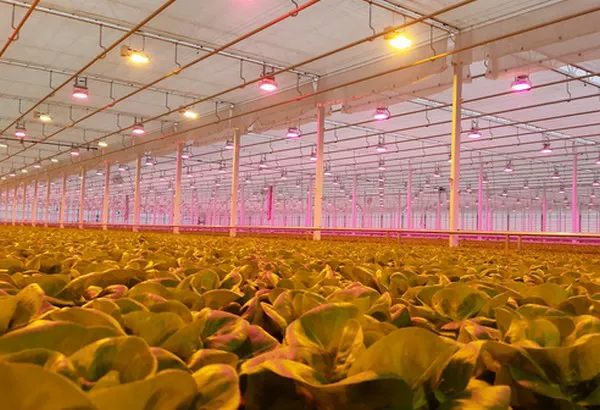
Phase 2 with 50:50% hybrid, HPS and Hyperion LED, next to phase 3 with 100% LED
Did you make any further changes to the growing strategy with 100% LED?
“The only change is in the temperature strategy, the plants are more compact, so you should work at higher temperatures to keep the plants slightly taller.”
Whilst it is only a few months since installation, how is the crop growing?
“I am happy because the plants look fine, if a little darker, but the shelf life is much longer.”
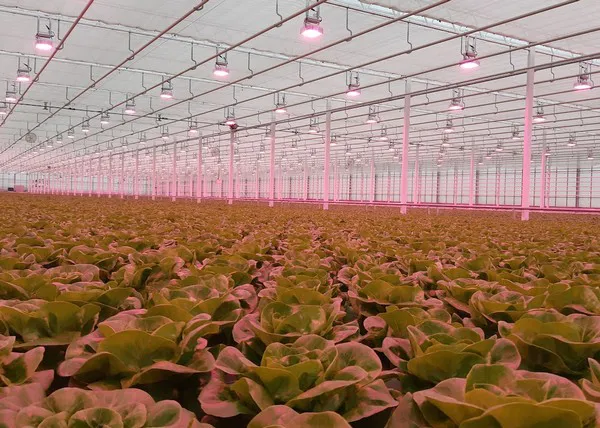
Phase 3 complete with the first crop under 100% LED
For more information: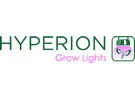
Hyperion Grow Lights
www.hyperiongrowlights.com
